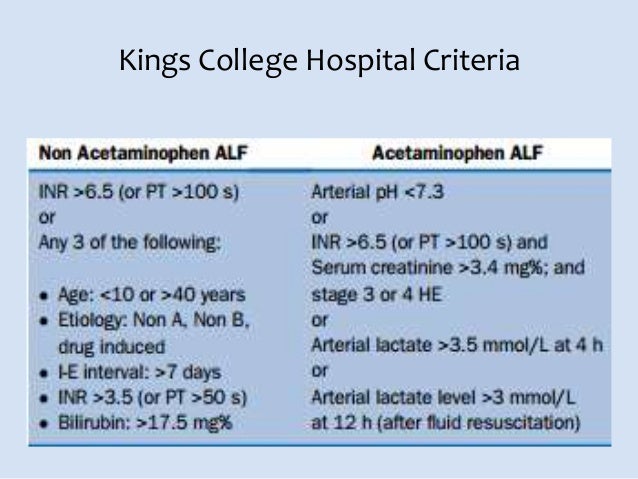

The most common precipitant of renal failure in patients with cirrhosis is bacterial infection 13, 14. Such acute small increases in serum creatinine have been shown to be clinically significant in cirrhotic patients in intensive care unit 11, 12, and in cirrhotic patients in an ambulatory setting 4.Īlthough AKI in cirrhosis can occur spontaneously, it is frequently precipitated by an acute event 2. This definition, although similar to the definition of AKI in non-cirrhotic patients by the Acute Kidney Injury Network (AKIN) 10, involves no stages of AKI. The International Ascites Club and the Acute Dialysis Quality Initiative (ADQI) group recently proposed that acute renal injury (AKI) in cirrhosis should be re-defined as a rise in serum creatinine of ≥0.3mg/dL (26.4μmol/L) in less than 48 hours or a 50% increase in serum creatinine from a stable baseline reading within the previous 6 months, irrespective of the final serum creatinine level 9. Therefore, in decompensated cirrhosis, patients with normal serum creatinine may already have significant renal dysfunction 8. Furthermore, serum creatinine, the most widely accepted measure of renal function, does not accurately reflect renal function in advanced cirrhosis, especially in those with muscle wasting 7. However, there is emerging evidence suggesting that even milder degrees of renal dysfunction in cirrhosis are associated with a poor prognosis 4– 6. Because of the rigid diagnostic criteria of type 1 HRS, which requires a serum creatinine of >2.5mg/dL (233μmol/L) for its diagnosis 3, patients with lesser degrees of renal dysfunction are less likely to be treated. At one end of the spectrum of renal dysfunction is type 1 hepatorenal syndrome (HRS), which is an acute form of renal failure associated with significant morbidity and mortality 2. Conversely, multivariate analysis of these five factors in patients with MELD scores 20-29 found that age ( P = 0.012), etiology ( P = 0.024), serum sodium ( P = 0.005) and ascites ( P = 0.017) were independent predictors of 3-month mortality MELD score was not an independent predictor of mortality in patients with MELD score 20-29 once other factors were taken into account.Renal dysfunction is a common complication of liver cirrhosis, occurring in approximately 20% of all hospitalized patients with cirrhosis 1. Of these five factors, only MELD score ( P = 0.015) was independent predictor of 3-month mortality in patients with MELD score ≥30. When the remaining predictors significant at P < 0.05 were subjected to binary logistic regression, only age ( P = 0.013), etiology ( P = 0.009), serum sodium ( P = 0.026), ascites ( P = 0.025), and MELD score ( P = 0.025) were independent predictors of 3-month mortality in all patients ( Table 6 ). In multivariate analyses to identify predictors of 3-month mortality ( Table 5 ), the significant factors (sex, age, etiology, serum sodium, ascites, MELD score) were entered in multivariate logistic regression model. Prognostic factors associated with 3-month mortality in multivariate analysis. Univariate analysis showed that the mortality of patients with MELD score ≥40 did not seem to be associated with sex ( P = 0.846), age ( P = 0.743), etiology ( P = 0.851), serum sodium ( P = 0.901) or ascites ( P = 0.517). In univariate analysis, we analyzed the prognostic value of clinical and biological variables in 3-month mortality of patients with MELD score ≥40 ( Table 4 ). Univariate prognostic analysis of the 3-month mortality of patients with MELD score ≥40.

The mortality of patients with MELD score 30-39 did not seem to be associated with sex ( P = 0.897), serum sodium ( P = 0.236) or ascites ( P = 0.396). Univariate analysis showed that the following factors had significant prognostic value: age ( P = 0.046), and etiology ( P = 0.042). In univariate analysis, we analyzed the prognostic value of clinical and biological variables in 3-month mortality of patients with MELD score 30-39 ( Table 3 ). Univariate prognostic analysis of the 3-month mortality of patients with MELD score 30-39. The mortality of patients with MELD score 20-29 did not seem to be associated with sex ( P = 0.973).

Univariate analysis showed that the following factors had significant prognostic value: age ( P = 0.047), etiology ( P = 0.039), serum sodium ( P = 0.029) and ascites ( P = 0.031). In univariate analysis, we analyzed the prognostic value of clinical and biological variables in 3-month mortality of patients with MELD score 20-29 ( Table 2 ). Univariate prognostic analysis of the 3-month mortality of patients with MELD score 20-29. Factors Influencing the Prediction Ability of MELD Scoring System


 0 kommentar(er)
0 kommentar(er)
